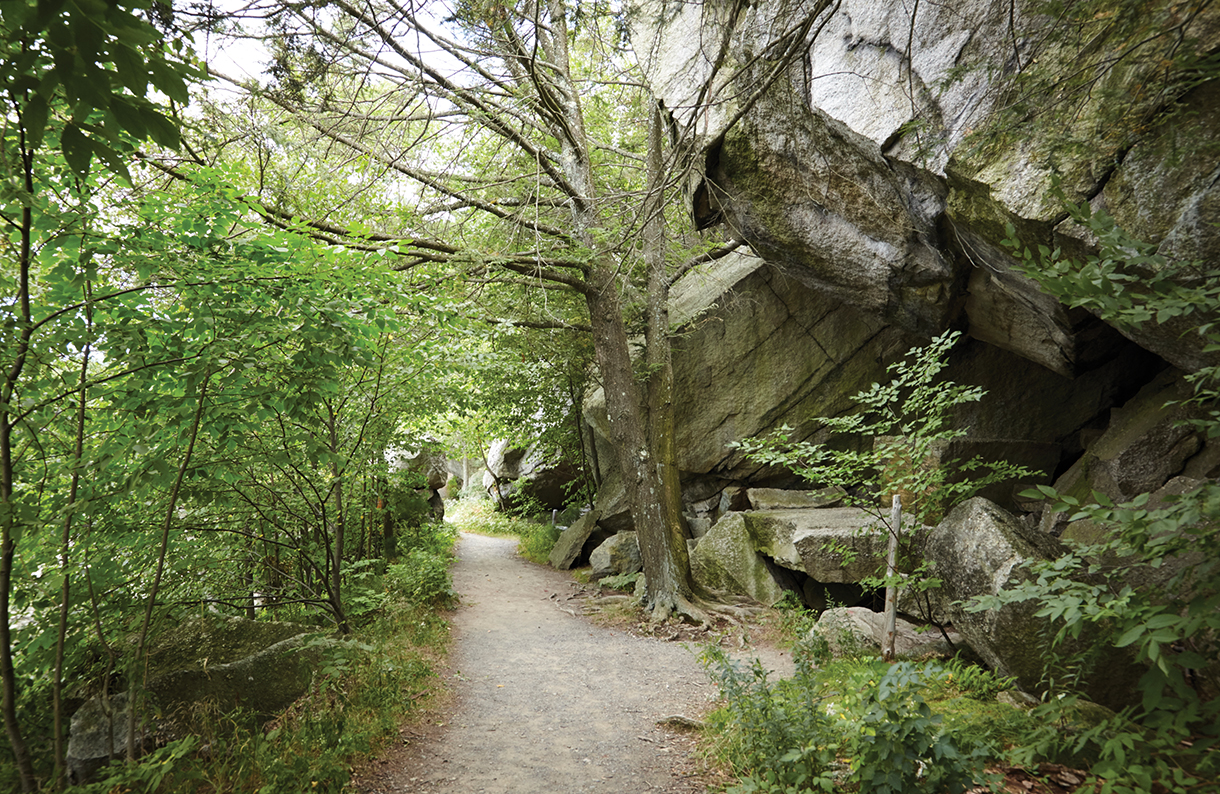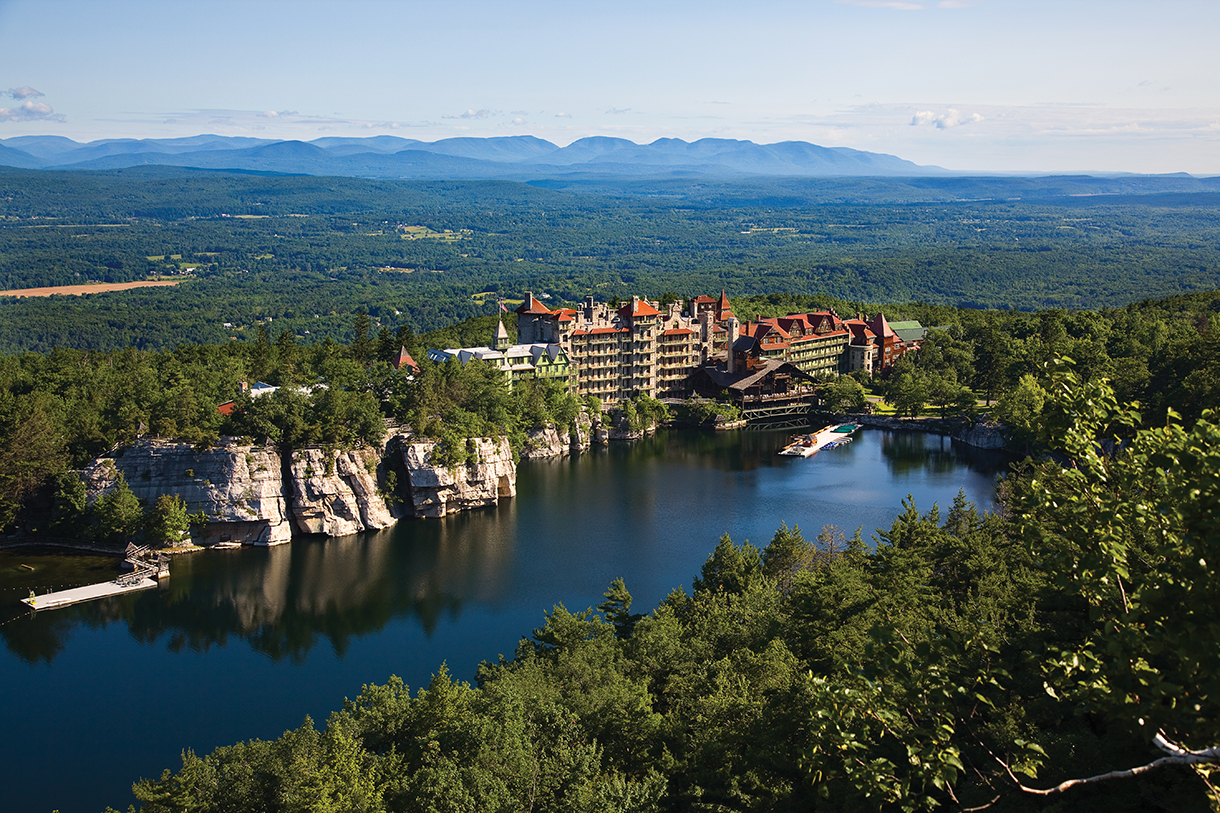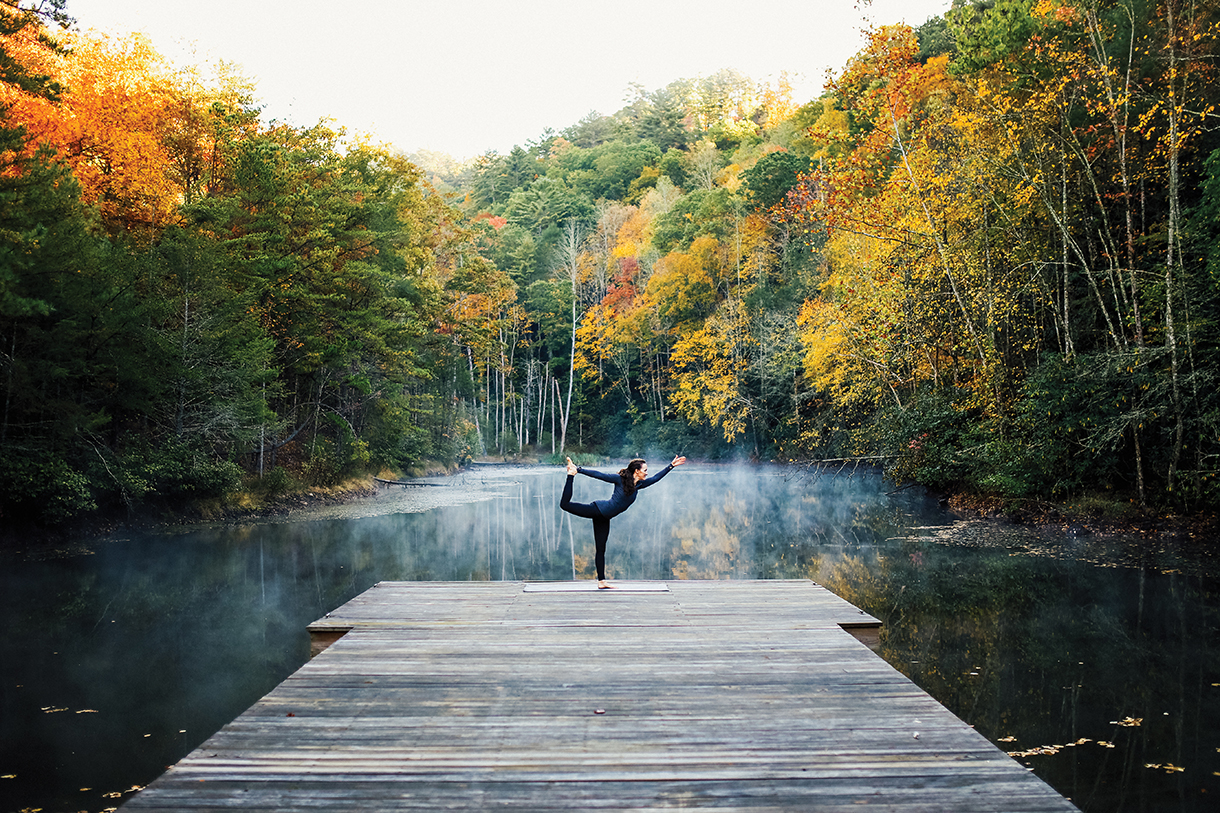
Into the Woods
Linked to cancer prevention and better overall health, the Japanese practice of forest bathing is turning hotel stays into tree-loving wellness escapes.
Let’s get this out of the way quickly: Forest bathing doesn’t require any special swimwear. And it’s not going to burn a lot of calories. In fact, the all-season activity requires walking as slowly as possible. In winter, strap on a pair of snowshoes. Otherwise, just wear sensible shoes. At the end of the experience, stress levels drop and moods improve. One simply becomes healthier than before.
The roots of forest bathing can be traced to Japan where the practice is known as shinrin-yoku, a term coined in 1982 by the country’s Ministry of Agriculture, Forestry, and Fisheries. Since then, the beneficial effect of forests on human health has become a focus of scientific research, especially as more people live in urban areas often devoid of trees and spend more time indoors. Forest bathing, meanwhile, has slowly spread to wellness centers around the world and has become a popular fitness activity offered by hotels, even ones in less-than-remote locations. Hotel Ivy, a Luxury Collection Hotel (marriott.com) in downtown Minneapolis, for example, will arrange a forest bathing excursion into the Minnesota forest, a 15-minute drive, with a certified guide/instructor.
The science behind forest bathing is still ongoing, but here is what we know so far: As noted by New York’s Department of Environmental Conservation and other organizations, exposure to forests boosts our immune system. When we’re in a forest, we breathe in phytoncides, airborne compounds that plants use to ward off invaders. Our bodies react to phytoncides by increasing the number and activity of white blood cells that act as natural killers (NK), which kill tumor and virus-infected cells in our bodies. A three-day, two-night forest-bathing trip, for instance, can boost NK activity for between a week to a month, depending on a person’s physiology. Japanese researchers are currently investigating whether forest bathing can help prevent certain types of cancer. Different types of trees produce different types of phytoncides, so research continues regarding the varying effects of species like pine, birch, and oak, for example.
Just how critical phytoncides are can perhaps be measured by their absence. The emerald ash borer is a beetle that kills ash trees. In communities where the destruction caused by this insect left streets treeless, significant jumps in lung disease and heart disease were subsequently recorded.
Researchers have found that forest bathing has other measurable effects as well: It reduces the stress-related hormones cortisol and adrenaline, plus anxiety, depression, anger, confusion, and fatigue, while also lowering blood pressure, increasing energy levels, boosting creativity, and improving sleep.

But forest bathing is about more than just taking a deep breath in the woods. For practitioners like Nina Smiley, Ph.D., director of mindfulness programming at the Mohonk Mountain House (mohonk.com) in New Paltz, New York, the benefits of forest bathing are enhanced by a meditative approach that focuses on the sense of well-being that comes from immersing oneself in nature.
“Stress can be a habit,” says Smiley, a diminutive woman who favors tiny, silver-wing earrings that give her an elvish air. The landmark Mohonk Mountain House is a castle-like, 151-year-old hotel that feels like a tranquil wilderness retreat with hilly forest paths circumnavigating a beautiful, glacial lake. Smiley is a member of Mohonk’s founding family that still operates the resort. Her forest-bathing instructions put one in mind of the Jedi training Yoda passed to a young Luke Skywalker in Star Wars. Smiley, who holds a Ph.D. in psychology from Princeton University, describes the work as creating new neural paths that calm the mind and reduce stress. Her goal is the same as Yoda’s: develop a sense of inner peace in a world full of stressful challenges.
So welcome to life in the very slow lane. For Smiley, the goal is not completing a walk around the lake in the fastest, heart-racing time possible; it is experiencing natural surroundings in the here and now while letting modern distractions float away: moving at a snail’s pace, slowly placing one foot down after another, focusing on the feeling of your foot coming into contact with the earth. The emphasis is on building an awareness of the senses. This may mean simply focusing on the sounds of the forest with eyes closed or hearing the wind rustling branches or the cries of a passing bird, all the while sucking in those phytoncides with deep breaths. Forest bathing Smiley-style also means looking hard at what normally rates for a passing glance, such as the differing patterns in a pair of leaves or the way exposed roots curve around stone. If 10,000 steps a day has been a fitness goal, 100 is pushing it in forest bathing. The experience is like sunbathing for your senses and accommodates virtually all fitness levels.

Numerous hotels and resorts now offer forest bathing with guides certified by the Association of Nature and Forest Therapy Guides and Programs (natureandforesttherapy.org), while countries like South Korea have a dedicated National Center for Forest Therapy (daslim.fowi.or.kr). Not all are strictly uniform in their approach, with the addition of yoga as the most common variant. Some locations, such as The Lodge at Woodloch (thelodgeatwoodloch.com) in Pennsylvania’s Pocono Mountains, The Ranch at Rock Creek (theranchatrockcreek.com) in Montana, Virginia’s Primland (primland.com), and Armathwaite Hall (armathwaite-hall.com) in England’s Lake District, offer forest bathing as part of an overall spa program. Others like the Blackberry Farm (blackberryfarm.com) in Tennessee’s Smoky Mountains include forest bathing as part of a larger “Wellhouse” program that includes endurance hikes. Still others take advantage of local opportunities. For example, the Trout Point Lodge (troutpoint.com), a luxury property in Nova Scotia, adds foraging walks to discover edibles in a pristine Acadian forest. And in Minneapolis, the Hotel Ivy includes a custom “forest” cocktail using nonalcoholic Seedlip distilled spirits as part of the post-walk wind down conducted by ANFT-certified guide David Motzenbecker. L’Auberge de Sedona (lauberge.com) in Arizona includes a tea ceremony and a keepsake journal as a parting gift. The Lodge at Spruce Creek (sprucepeak.com) in Vermont makes forest bathing a central feature of its winter Mindful Snowshoe Tour. Also available are independent guides like Adirondack Riverwalking (adirondackriverwalking.com) in Lake Placid, New York, which partners with various local ski centers. Rates vary depending on the duration of the experience and the number of people in a given group. At the Mohonk Mountain House, for instance, a 50-minute private program goes for $165.




